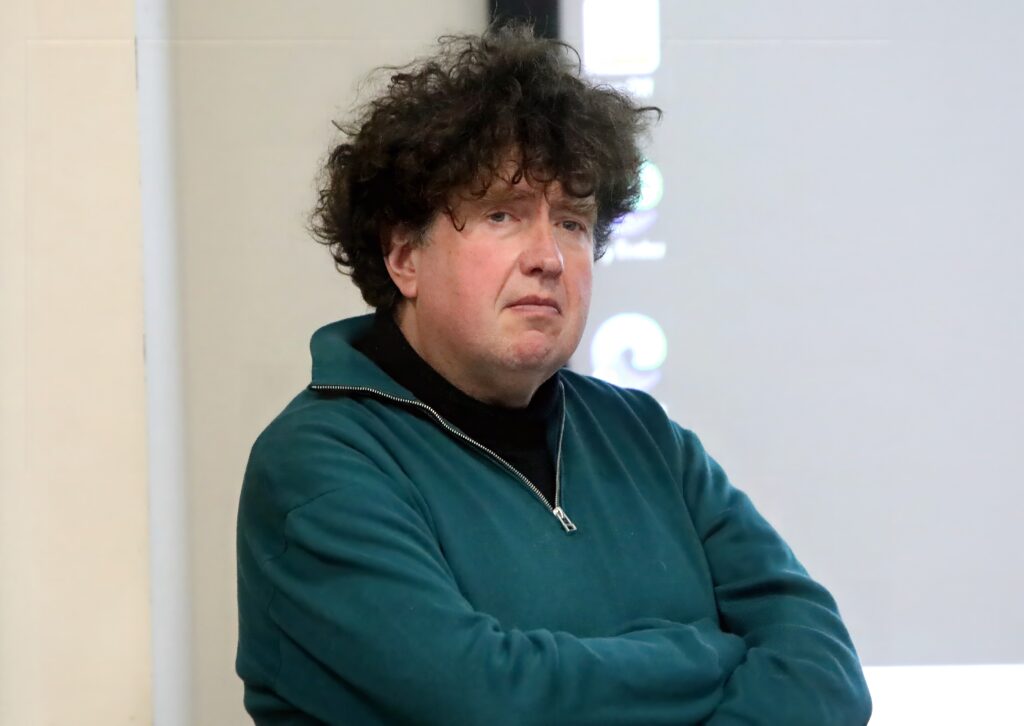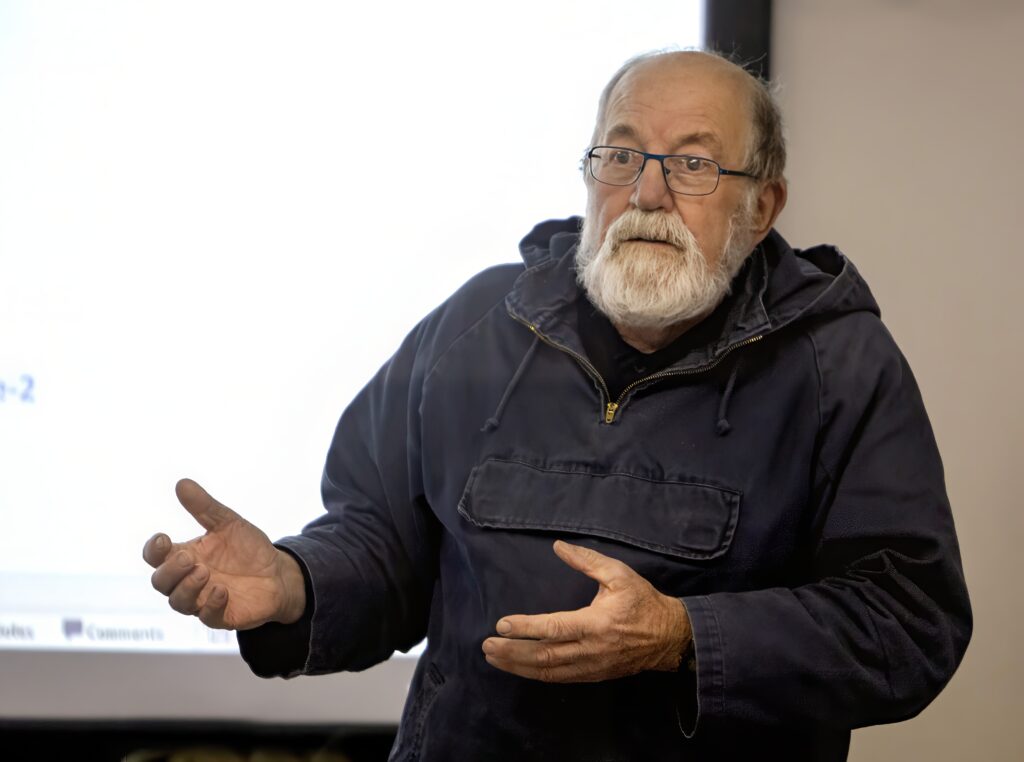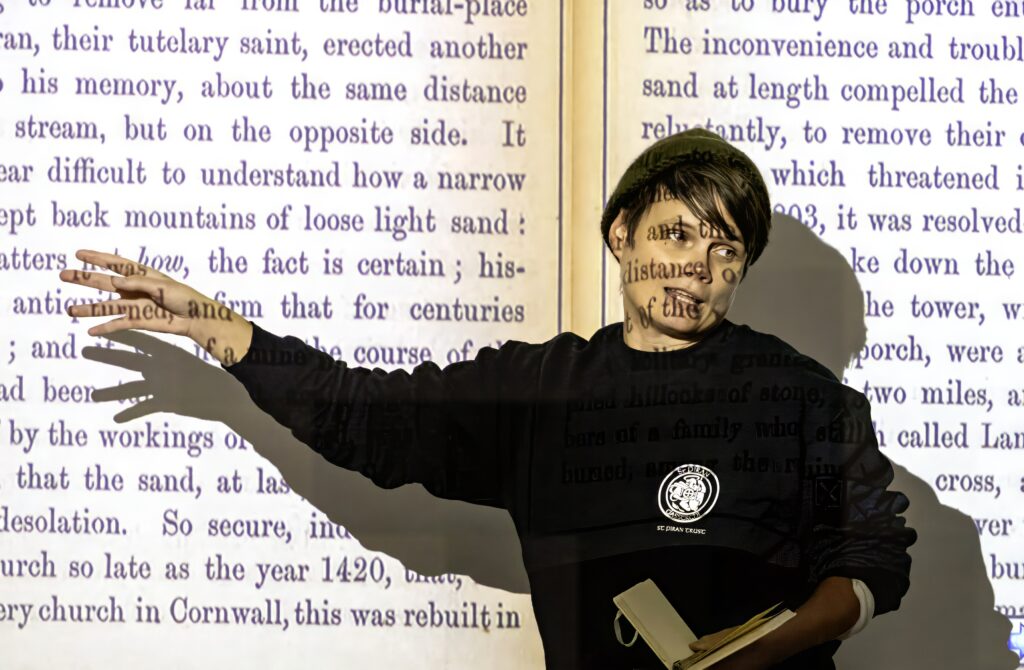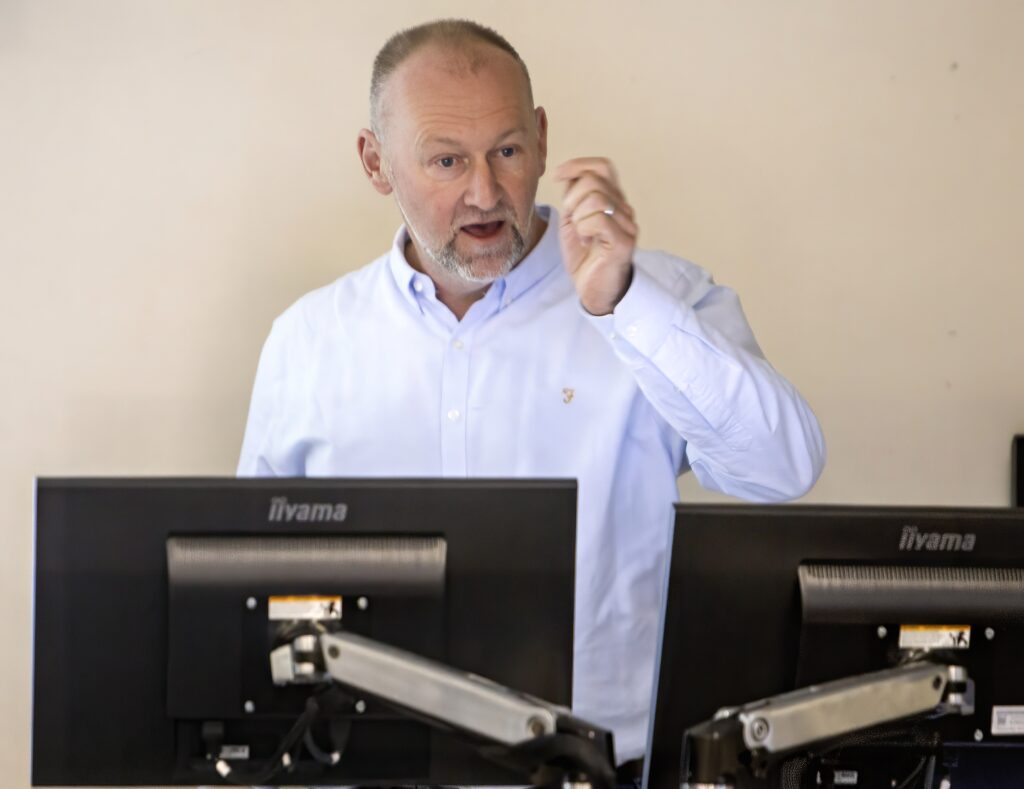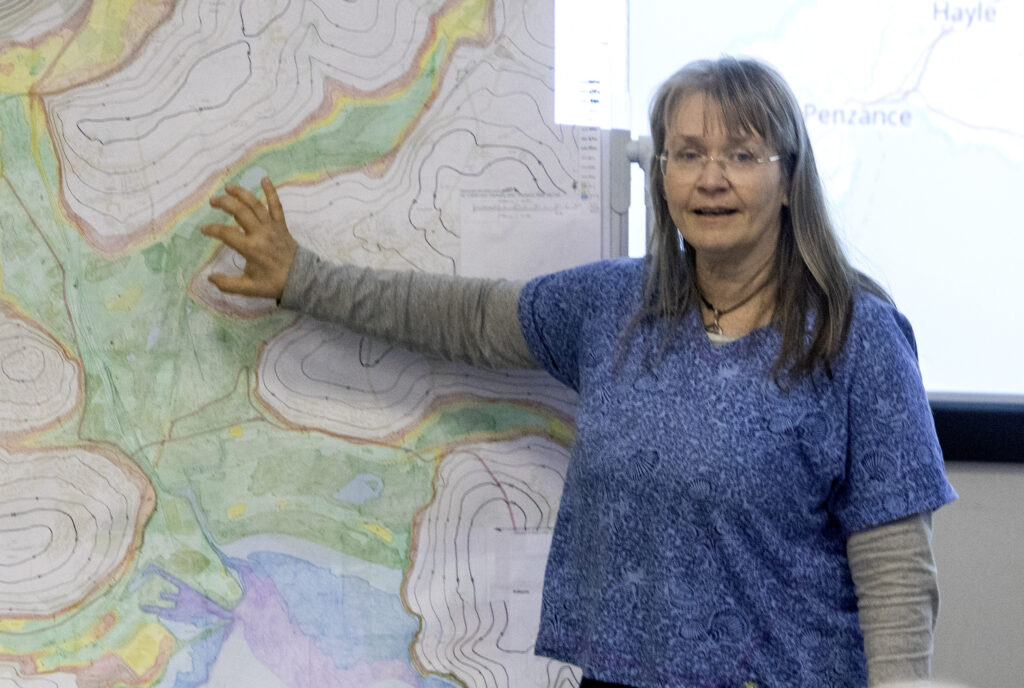Climate change is an everyday concern in today’s society. This is particularly the case in coastal communities that are often subject to serious flooding and the impact of rising sea levels. The Cornish experience of coastal change in the past proved to be a popular subject for discussion at a recent symposium at the Penryn Campus on 5th December 2023 organised by the Institute of Cornish Studies in association with the Federation of Old Cornwall Societies. A group of researchers talked about the subject in relation to specific spots that geographically ranged from Bude on the north coast down to St Michael’s Mount and the Isles of Scilly and then along the southern coast up to Seaton. The talks utilised a wide range of approaches including folklore and stories relating to drowned lands in the past from Lyonesse to Looe along with specific historical attempts to develop port facilities at spots like St Agnes, Mullion and Falmouth. Place name evidence was also shown as examples of coastal change from St Michael’s Mount (in Cornish it was ‘Karrek Loos yn Koos meaning ‘grey rock in woodland’ indicating it was once further inland) to Tywardreath (translated into English as ‘House on the Strand’ and the title of Daphne Du Maurier’s novel).
The symposium was also an opportunity to reflect on the development of a project in relation to Cornwall’s changing coastline. This was an idea to come out of Morek (Cornish for ‘Maritime’), which is a research group set up between the Institute and the National Maritime Museum Falmouth as a result of a Memorandum of Understanding with the University of Exeter. With Morek bringing together researchers exploring different aspects of Cornwall’s maritime past, present and future it was seen as important to understand how the coastline itself has been subject to change through time. Inland settlements like Lostwithiel and Tregony were once important ports in their own right. Silting as a result of centuries of tin streaming and then clay extraction meant that the sea was gradually forced further out at places like Par.
Ideas discussed at the symposium included museum exhibitions, books studying the subject in detail at various spots around the Cornish coast, films applying the creative power of the moving image and an online trail of sites that can enable individuals to explore coastal change through walking tours. A major conference along with more local events combining history, stories and music at the sub-regional level were also suggested. The project team would like to hear from individuals and groups who are interested in being involved in a variety of ways such as writing articles, doing archive research and collecting communal stories and oral histories. If you are interested in being involved please email G.H.Tregidga@exeter.ac.uk
